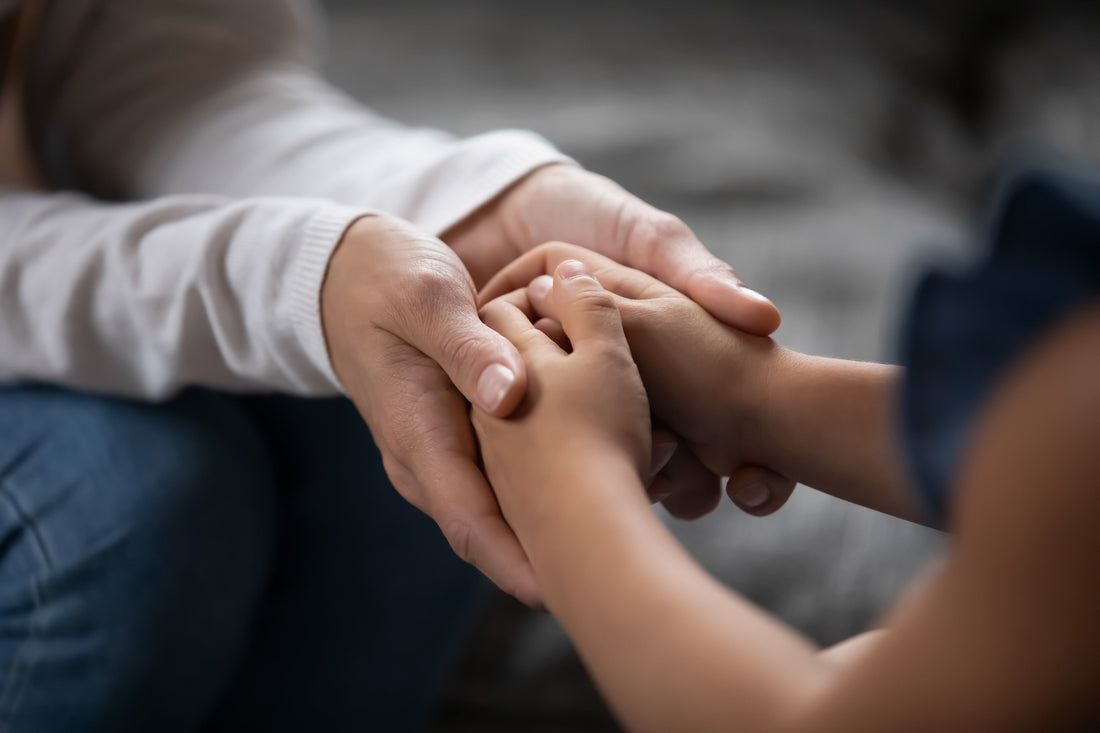HOW TO TALK TO CHILDREN ABOUT LOSS: FROM DR JOHANNA CLANCY AND DR MARESE MCDONNELL, SENIOR CLINICAL PSYCHOLOGISTS, CRADLE PSYCHOLOGY

Share
As a clinical psychologists working with families of all shapes, sizes and contexts, one of the most delicate and sensitive tasks we support parents with is helping their children understand and process the death of a loved one. Whether it’s a grandparent, parent, sibling, or even a pet, children experience grief differently to adults – and our instinct to protect them from pain can sometimes make it harder for them to make sense of what’s happened.
There’s no perfect way to have conversations on the topic of loss, but there are ways to speak about death that are honest, age-appropriate, and ultimately more comforting than pretending all is OK, or coming up with a narrative that feels less permanent and final. In this article, we are going to share what we have learned from working with families over the years, and offer some gentle guidance if you’re facing this situation.
Start with honesty, using simple language
Children need clear and concrete information. Euphemisms like “passed away”, “gone to sleep”, or “we lost him” can be confusing or even frightening to young children. A child might be left wondering, “If she went to sleep and didn’t wake up, will that happen to me too?” or “If we lost him, why aren’t we looking for him?”
Our advice is that it’s generally best to use the word “died”, however uncomfortable it may feel. You might say, “Nana died yesterday. That means her body stopped working and she isn’t alive anymore.” The aim is to help your child understand death as something real and irreversible, not something vague or temporary.
Answer questions as they come
Children often process grief in their own way over time. They may ask a lot of questions, or they may seem to completely ignore what you’ve told them and start playing with their toys again. This is normal! It doesn’t mean they aren’t affected – it just means they are digesting the information in a way that feels manageable for them.
Some questions might be very practical: “Who will feed nana’s dog now?” or “Will we still go to Grandad’s house?” Others might be harder to answer, like “Where did she go?” or “Are you going to die too?” It’s okay not to have all the answers. You can say, “That’s a really good question. I don’t know exactly, but I do know that I want to be here to look after you for a very long time.”
Make space for all feelings
Grief looks different for everyone. Some children cry a lot, others seem more clingy and even angry. Some - and this can be common! - act as though nothing has changed at all. All of these responses are normal.
Children also need permission to express their feelings. They need to know it’s OK to be sad, confused, scared, or even relieved (in cases where the loved one was very unwell). You might say, “I feel sad too. I miss him so much. That shows how much I loved him. It’s okay to talk about how you feel.”
Be aware of your own emotional response. If you’re crying, it’s perfectly fine for your child to see that. In fact, it can be helpful – it shows them that feelings are safe and acceptable, and that adults also have big emotions.
Keep routines where you can
In the midst of grief, structure can be very grounding. Try to maintain ordinary routines like mealtimes, school drop-offs, and bedtime. These small moments of normality help children feel safe and contained, even when things are happening beyond their control.
Of course, there may be disruptions – especially around funeral arrangements. If so, explain what’s happening in advance. For example: “Tomorrow there will be a big gathering at the church to say goodbye to your uncle. There will be lots of people and some of them might be crying because they are feeling sad too. You can stay with me the whole time.”
Include the child, if they want to be included
Sometimes adults assume children should be kept away from funerals or memorials, but many children want the chance to say goodbye. Offer the choice, and describe what will happen. For younger children, you could suggest a way for them to take part – like placing a flower down, drawing a picture, or lighting a candle.
If a child doesn’t want to attend, that’s okay too. There are many other meaningful ways to honour a loved one. You might create a memory box together, look at photos, share stories, or plant something in their memory.
Grief doesn’t follow a set timeline
There’s no set duration for grief. A child might seem “fine” for weeks, then suddenly become tearful or anxious months later. This can often be seemingly random, or due to an environmental reminder (e.g., seeing Nana’s scarf).
Be prepared for grief to resurface, allow it to be present. You might notice signs in their behaviour (e.g., sleep problems, more emotional outbursts, school refusal) that suggest they’re still processing what happened.
If you are concerned about the intensity of your child’s grief, or it is having a significant impact on their day-to-day functioning, you might then consider seeking support from a professional like a psychologist or therapist.
Our final thoughts
Death is often hard to talk about. As adults, we can have a strong drive to shield children from its reality – but when we speak about it with honesty, warmth, and openness, we actually help them feel more in control and able to cope. We show them that even in the face of sadness, their feelings are held by us with care, and that is the most important message we can give them in the face of loss.
